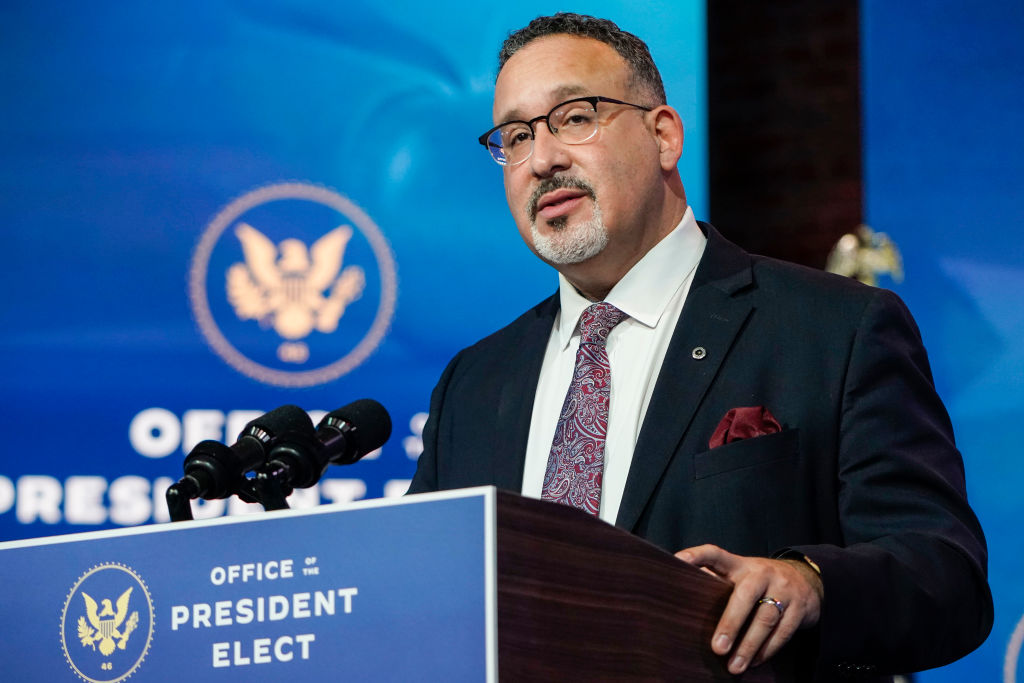
The Education Department on Thursday urged colleges to use Higher Education Emergency Relief Funds (HEERF) on mental health services on campus. The announcement provides college administrators with a clarification that HEERF funds can be used for needed mental health service improvements, which were originally not included in HEERF legislation.
“Mental health is overwhelmingly the top concern we hear from presidents,” said Jonathan Fansmith, the assistant vice president of government relations for the American Council on Education. “It’s a very challenging environment for institutions, and these things are expensive to do. So the ability to use some of these higher education relief funds that the federal government provided for those purposes is hugely helpful.”
HEERF provided $14 billion to colleges across the nation as part of the CARES Act to address urgent student needs during the pandemic. This guidance from the department not only signals to college administrators that the funding can be spent on mental health services but also provides examples of programs, resources and services colleges can implement to address rising rates of mental health struggles on college campuses from the impact of the COVID-19 pandemic.
College students have increasingly struggled with anxiety and depression as a result of the pandemic, and college leaders have indicated that mental health is a top priority. Seventy-five percent of college presidents indicated mental health was a top concern according to a 2021 survey, and data from the Centers for Disease Control and Prevention show that 75 percent of 18- to 24-year-olds indicated they have experienced a mental health symptom in June 2020.
HEERF Funding and Mental Health
The department provided a detailed outline of how HEERF money can be used to address mental health needs on campuses, which includes examples of how colleges across the nation have used HEERF so far to change and expand their mental health support systems.
The Biden administration made the following recommendations:
- Expand and strengthen in-person and remote mental health services, such as telehealth, to increase student, faculty and staff access to counselors and mental health professionals.
- Establish new resources to connect students to needed care through innovative methods like 24-hour hotlines and mental health prevention and intervention trainings.
- Create programs that will expand mental health awareness and resources on campuses long term.
Education Secretary Miguel Cardona spoke Thursday at the University of California, Riverside, which he stated was a model for mental health services for other institutions of higher education to follow. Multiple student leaders from UC Riverside described what campus mental health services they have seen be successful in addressing mental health concerns and where they believe the university can improve.
“The pandemic has exposed students from all ages to trauma, from the loss of loved ones to financial hardships to social isolation and learning disruptions,” said Cardona. “In discussions with students across the country, they’ve been honest with me: they need better mental health resources on campus.”
The UC Riverside student leaders stressed that college students need a variety of mental health resources to choose from that can address a range of needs. These could include peer groups, private counseling and therapy, and increased financial support to connect students with mental health therapists. The students said that services like on-campus counseling without a co-pay and free transportation to mental health appointments have been successful at UC Riverside.
Telemedicine, noted as one resource colleges could cover with HEERF, has been found to expand access to mental health care. TimelyMD, a telehealth provider serving over one million students across 200 college campuses, found that, since the pandemic, 70 percent of visits were for mental health, compared to 10 percent pre-pandemic. Additionally, 40 percent of mental health visits were after regular office hours.
A central theme of the conversation was increasing the diversity of mental health staff to reflect the student population’s diversity and ensuring universities make students aware of the resources that are available.
“I think it has to come back to having these conversations with culture, and it’s OK for a community to have these conversations,” said Mario Mendoza, a graduate peer health educator at UC Riverside.
The students at UC Riverside came from a range of both university and student-led organizations that promote the mental and physical well-being of students. They noted that although UC Riverside is a model for mental health care, there is still more work that could be done, and the HEERF money could help to address this.
Yuritza Escalante, an undergraduate at UC Riverside who works for a peer mentorship and mental health awareness organization called Active Minds, said that it is important to increase funding for adequate mental health training for all students, not just student leaders like herself. “Training is so limited—there are certain types of training that cost more money than others,” she said.
Increased access to training, according to Escalante, would help more students be prepared to address mental health needs on their own and on campus at large.
In addition to direct mental health services, the students noted that it is important for universities to provide resources that address the basic needs of students, such as safe housing and food.
Lastly, the students stated that it is important for universities to invest in mental health services long term.
“The next step in funding is to make sure that all schools that are not talking about mental health are able to buy those resources, implement those resources, implement those programs that are needed to adequately address these needs that students are now expressing more than ever,” said Escalante.
from Inside Higher Ed | News https://ift.tt/prn0ZH2


No comments:
Post a Comment